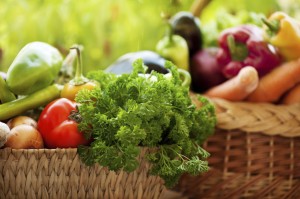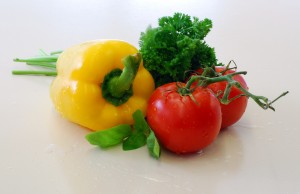 Eating plays a large role at nearly every holiday event. Not so coincidentally, eating better becomes a New Year’s resolution for an overwhelming number of the population once the holidays are over. Breaking the habits of bad eating can be very difficult, especially in the winter months as we are inside more, increasing our kitchen flow. Continue to be refreshed this new year. Let 2013 be the year you are actually able to stick to your diet so all of your goals and expectations can be met.
Eating plays a large role at nearly every holiday event. Not so coincidentally, eating better becomes a New Year’s resolution for an overwhelming number of the population once the holidays are over. Breaking the habits of bad eating can be very difficult, especially in the winter months as we are inside more, increasing our kitchen flow. Continue to be refreshed this new year. Let 2013 be the year you are actually able to stick to your diet so all of your goals and expectations can be met.
The death of the Twinkie isn’t something to mourn. It’s passing was a wake-up call to everyone because we are slowly realizing the quality of the food we are putting in to our body. The Twinkie was a moist cake with cream inside, yet it could sit on a shelf at room temperature for half a decade. There is something wrong with that. However, we have become attached to such comfort and convenient food that prying ourselves away may take a well-thought out plan for every day eating activities. Below are a few initiatives to take when emphasizing good eating.
1. Get to know your Superfoods
There are delicious, common foods among us with super powers. Foods that are disguised as a basic food yet jam packed with nutrients are known as Superfoods that can help you lose weight the more you eat them. For example, edamame is a type of soybean that can be steamed or boiled. They are so jam packed with protein that they can replace meat for very few calories. According to Woman’s Day magazine, one cup of edamame supplies the daily suggestion for amino acid.
The acai berry is an all-star on the superfood team. It contains a significant amount of essential fatty acids like Omega 3 and Omega 6 and can strengthen the immune system, improve sleep, slow aging, detoxes the body, improves circulation, slows down aging and even helps to burn body fat.
2. Plan ahead
You don’t want to be the person that turns down a dinner invite to avoid high caloric intakes at a restaurant. You also don’t want to be the person who only orders a side house salad. If you’re able, research the nutritional information of the place you are going to and choose something that is right for you beforehand. In fact, a vast majority of chain restaurants provide the nutritional information of each product on their menu either on their menu, on a separate brochure, or online. Eat This Not That is a wealth of nutritional knowledge about restaurants and recipes . If you’re unable to plan ahead, here are some menu tips: go for the grilled options, avoid the pasta, and get their secret sauces on the side.
3. Start on the right foot
 Stretching and warming up are the best ways to maximize your work out. Similarly, eating a balanced breakfast is the best way to get your metabolism running at its highest efficiency. Egg whites, English muffins, fruits, yogurts, and juices are just a few safe options towards getting the most out of your day. Save the pancakes and French toast for special occasions. Such foods high in starch will leave the body tired and foggy, minimizing your metabolism action.
Stretching and warming up are the best ways to maximize your work out. Similarly, eating a balanced breakfast is the best way to get your metabolism running at its highest efficiency. Egg whites, English muffins, fruits, yogurts, and juices are just a few safe options towards getting the most out of your day. Save the pancakes and French toast for special occasions. Such foods high in starch will leave the body tired and foggy, minimizing your metabolism action.
4. Find your hunger type
Before you reach for that unhealthy snack, take a second and realize why you want to feed yourself. According to Dr. Oz, there are three hunger types: sensory, habitual, and emotional . There are certain times when one is set off to want to eat. A sensory hunger type is often affected after smelling or seeing food. An emotional hunger type wants to eat when frustrated, lonely, angry, or bored. A habitual hunger type is all about routine and schedule and eats just because of the time. See what hunger type you are and how to battle your hunger cravings by taking this quiz.
 5. Veg-Out
5. Veg-Out
Maximize your opportunities to eat vegetables. Though this might sound like a nightmare to some, understand that vegetables are a filling substance that won’t stick to your body. The best way to lose weight is by eating vegetables because they contain copious amounts of fiber and water and are low in calories. They are also rich in minerals, antioxidants, and phytochemicals, which are very helpful for maintaining and improving your health. The six best vegetables for weight loss are: broccoli, brussel sprouts, spinach, collard greens, beans, and carrots .
6. Be More Social at Social Settings
If it is your natural instinct to congregate around the food table at parties, trying a new scene to focus on the conversation and not the spread. Trying making a few laps before scoping the buffet. When you do grab a plate, start filling with crunchy vegetables and grilled chicken skewers before the cream cheese based dips and breads. Challenge yourself to a plate that is 3/4 full of healthy foods but allow yourself 1/4 of the other.
7. Get your sleep
Sleep deprivation can lead to high-carb food cravings because they offer very quick sources of energy. Sleeping an appropriate amount can reduce stress that causes bingeing on comfort foods. A variety of studies suggest that getting at least seven hours’ sleep every night can significantly improve the chance of losing weight while on a diet. There is a growing body of evidence that a lack of sleep enhances hunger signals in the brain and increases levels of hormones which affect our appetite, causing us to eat more . Like diet and exercise, sleep plays a pivotal role in weight management. Learn more on the side effects of sleep deprivation from a previous ExamOne blog.
8. Don’t dwell on what not to eat
Eating healthy should be a lifelong habit. Create a strong foundation for you and get yourself familiar with turning down the brownies being passed around the office. Once you’ve turned down something you should not have, don’t steam and think about how good it would taste right about now. Tempting yourself will distract you on moving forward. Hone in that energy and look up recipes that are healthy alternatives to your favorite fatty foods.
9. Moderation
Depriving yourself of all the foods you’re not allowed to have can backfire significantly. In fact, even anticipated deprivation before starting a diet can trigger incredible eating binges to fight the anxiety of dieting. This phenomenon is so common, researchers have coined a name for it: the “Last Supper effect.” Create an incentive for yourself. For example, award yourself some of that pizza you love if you eat salad for lunch all week.
10. Research true healthy foods
Grocery store labels can be very deceiving. For example, products labeled as “low fat” may compensate with loads of sodium, sugar, trans fats, and calories. Read your nutritional facts to get a real gauge on the healthy level of your product. There are many foods that may seem like the healthy choice, but are not the best option. Smoothies, granola, packaged turkey, and energy bars can turn on you through high calories, sugar, and sodium levels.
11. Snack smart
This is easier said than done. Salts and sugars come strong when there is a lull in your day and rumble in your tummy. Alternatives to your processed, convenient snacks are a must when combating the time in between your meals. For example, local health food stores generally sell veggie chips that have the crunch and texture of the classic chip but are made of spinach and sweet potato. If it is the crunch you crave, grab some carrots or celery to fill that void.
12. Substitute your sweets
Unless you are not human, it is likely that you can’t give up sweets forever. Indulge at times but do so strategically. Arm your pantry with dark chocolate covered almonds when you are craving that candy bar or know the location of your nearest frozen yogurt bar so you can happily forego the rich concrete ice creams.
13. Spice It up
Literally! Become strategic in your spices to battle the high sodium or sugar cravings while benefiting your health. Common herbs and spices can help protect against certain chronic conditions, such as cancer, diabetes and heart disease . The better you make your food taste, the more satisfying it will be to your stomach leaving you less inclined to reach for snacks. Refer to this article from About.com for tasty tips on spicing up your everyday recipes .
 More than anything, stay focused on your goal. Visualize how you want your diet to pan out and keep that vision when you think about acting off of your diet. Everyone’s body reacts differently to diets so find what works for you and don’t get discouraged if you strike out at first. Keep working at it and know that your diet is unique to you and your capabilities.
More than anything, stay focused on your goal. Visualize how you want your diet to pan out and keep that vision when you think about acting off of your diet. Everyone’s body reacts differently to diets so find what works for you and don’t get discouraged if you strike out at first. Keep working at it and know that your diet is unique to you and your capabilities.
Staying healthy is becoming a national trend. Take advantage of the resources that are becoming more readily available at restaurants and online to carry you towards your dieting goal.
________________________________________
[1] Ansel, K. (2012). 12 Supermarket Superfoods. Woman’s Day, Retrieved at:http://www.womansday.com/health-fitness/nutrition/edamame-superfood#slide-12
[1] Unknown. (2012, February 22). 16 Superfoods You Should Know About! (Part 1). Be Well Buzz Blog, Retrieved at: http://www.bewellbuzz.com/superfoods/16-superfoods-you-should-know-about-part-1/
[1] Eat This Not That Website, http://eatthis.menshealth.com/
[1] Durvasula, R. (2012, December 17). What’s Your Hunger Type? The Dr. Oz Show Website, Retrieved at: http://www.doctoroz.com/videos/what-s-your-hunger-type
[1] Unknown. (2010, November 18). 5 Best Vegetables for Weight Loss. Newsmax Health Website, Retrieved at: http://www.newsmax.com/FastFeatures/diets-vegetables-dieting-weight/2010/11/18/id/377479
[1] Collins, N. (2012, September 17). Good Night’s Sleep Can Help You Diet. The Telegraph. Retrieved at: http://www.telegraph.co.uk/health/healthnews/9548022/Good-nights-sleep-can-help-you-diet.html
[1] Foley, D. (2012, March 12). Dr. Oz’s Eat What You Love Diet. Good Housekeeping, Retrieved at: http://www.goodhousekeeping.com/health/diet-plans/dr-oz-eat-what-you-love-diet
[1] Ward, E. (2010). Spices and Herbs: Their Health Benefits. Web MD Website, Retrieved at: http://www.webmd.com/food-recipes/features/spices-and-herbs-health-benefits
[1] Cornforth, T. (2010, May 10). Spice Up Your Healthy Eating. Women’s Health, About.com, Retrieved at: http://womenshealth.about.com/od/recipesforhealthyliving/a/spicehealthyeat.htm




















The death of the Twinkie isn’t something to mourn. It’s passing was a wake-up call to everyone because we are slowly realizing the quality of the food we are putting in to our body. The Twinkie was a moist cake with cream inside, yet it could sit on a shelf at room temperature for half a decade. There is something wrong with that. However, we have become attached to such comfort and convenient food that prying ourselves away may take a well-thought out plan for every day eating activities. Below are a few initiatives to take when emphasizing good eating.
1. Get to know your Superfoods
There are delicious, common foods among us with super powers. Foods that are disguised as a basic food yet jam packed with nutrients are known as Superfoods that can help you lose weight the more you eat them. For example, edamame is a type of soybean that can be steamed or boiled. They are so jam packed with protein that they can replace meat for very few calories. According to Woman’s Day magazine, one cup of edamame supplies the daily suggestion for amino acid.
The acai berry is an all-star on the superfood team. It contains a significant amount of essential fatty acids like Omega 3 and Omega 6 and can strengthen the immune system, improve sleep, slow aging, detoxes the body, improves circulation, slows down aging and even helps to burn body fat.
2. Plan ahead
You don’t want to be the person that turns down a dinner invite to avoid high caloric intakes at a restaurant. You also don’t want to be the person who only orders a side house salad. If you’re able, research the nutritional information of the place you are going to and choose something that is right for you beforehand. In fact, a vast majority of chain restaurants provide the nutritional information of each product on their menu either on their menu, on a separate brochure, or online. Eat This Not That is a wealth of nutritional knowledge about restaurants and recipes . If you’re unable to plan ahead, here are some menu tips: go for the grilled options, avoid the pasta, and get their secret sauces on the side.
3. Start on the right foot
4. Find your hunger type
Before you reach for that unhealthy snack, take a second and realize why you want to feed yourself. According to Dr. Oz, there are three hunger types: sensory, habitual, and emotional . There are certain times when one is set off to want to eat. A sensory hunger type is often affected after smelling or seeing food. An emotional hunger type wants to eat when frustrated, lonely, angry, or bored. A habitual hunger type is all about routine and schedule and eats just because of the time. See what hunger type you are and how to battle your hunger cravings by taking this quiz.
Maximize your opportunities to eat vegetables. Though this might sound like a nightmare to some, understand that vegetables are a filling substance that won’t stick to your body. The best way to lose weight is by eating vegetables because they contain copious amounts of fiber and water and are low in calories. They are also rich in minerals, antioxidants, and phytochemicals, which are very helpful for maintaining and improving your health. The six best vegetables for weight loss are: broccoli, brussel sprouts, spinach, collard greens, beans, and carrots .
6. Be More Social at Social Settings
If it is your natural instinct to congregate around the food table at parties, trying a new scene to focus on the conversation and not the spread. Trying making a few laps before scoping the buffet. When you do grab a plate, start filling with crunchy vegetables and grilled chicken skewers before the cream cheese based dips and breads. Challenge yourself to a plate that is 3/4 full of healthy foods but allow yourself 1/4 of the other.
7. Get your sleep
Sleep deprivation can lead to high-carb food cravings because they offer very quick sources of energy. Sleeping an appropriate amount can reduce stress that causes bingeing on comfort foods. A variety of studies suggest that getting at least seven hours’ sleep every night can significantly improve the chance of losing weight while on a diet. There is a growing body of evidence that a lack of sleep enhances hunger signals in the brain and increases levels of hormones which affect our appetite, causing us to eat more . Like diet and exercise, sleep plays a pivotal role in weight management. Learn more on the side effects of sleep deprivation from a previous ExamOne blog.
8. Don’t dwell on what not to eat
Eating healthy should be a lifelong habit. Create a strong foundation for you and get yourself familiar with turning down the brownies being passed around the office. Once you’ve turned down something you should not have, don’t steam and think about how good it would taste right about now. Tempting yourself will distract you on moving forward. Hone in that energy and look up recipes that are healthy alternatives to your favorite fatty foods.
9. Moderation
Depriving yourself of all the foods you’re not allowed to have can backfire significantly. In fact, even anticipated deprivation before starting a diet can trigger incredible eating binges to fight the anxiety of dieting. This phenomenon is so common, researchers have coined a name for it: the “Last Supper effect.” Create an incentive for yourself. For example, award yourself some of that pizza you love if you eat salad for lunch all week.
10. Research true healthy foods
Grocery store labels can be very deceiving. For example, products labeled as “low fat” may compensate with loads of sodium, sugar, trans fats, and calories. Read your nutritional facts to get a real gauge on the healthy level of your product. There are many foods that may seem like the healthy choice, but are not the best option. Smoothies, granola, packaged turkey, and energy bars can turn on you through high calories, sugar, and sodium levels.
11. Snack smart
This is easier said than done. Salts and sugars come strong when there is a lull in your day and rumble in your tummy. Alternatives to your processed, convenient snacks are a must when combating the time in between your meals. For example, local health food stores generally sell veggie chips that have the crunch and texture of the classic chip but are made of spinach and sweet potato. If it is the crunch you crave, grab some carrots or celery to fill that void.
12. Substitute your sweets
Unless you are not human, it is likely that you can’t give up sweets forever. Indulge at times but do so strategically. Arm your pantry with dark chocolate covered almonds when you are craving that candy bar or know the location of your nearest frozen yogurt bar so you can happily forego the rich concrete ice creams.
13. Spice It up
Literally! Become strategic in your spices to battle the high sodium or sugar cravings while benefiting your health. Common herbs and spices can help protect against certain chronic conditions, such as cancer, diabetes and heart disease . The better you make your food taste, the more satisfying it will be to your stomach leaving you less inclined to reach for snacks. Refer to this article from About.com for tasty tips on spicing up your everyday recipes .
Staying healthy is becoming a national trend. Take advantage of the resources that are becoming more readily available at restaurants and online to carry you towards your dieting goal.
________________________________________
[1] Ansel, K. (2012). 12 Supermarket Superfoods. Woman’s Day, Retrieved at:http://www.womansday.com/health-fitness/nutrition/edamame-superfood#slide-12
[1] Unknown. (2012, February 22). 16 Superfoods You Should Know About! (Part 1). Be Well Buzz Blog, Retrieved at: http://www.bewellbuzz.com/superfoods/16-superfoods-you-should-know-about-part-1/
[1] Eat This Not That Website, http://eatthis.menshealth.com/
[1] Durvasula, R. (2012, December 17). What’s Your Hunger Type? The Dr. Oz Show Website, Retrieved at: http://www.doctoroz.com/videos/what-s-your-hunger-type
[1] Unknown. (2010, November 18). 5 Best Vegetables for Weight Loss. Newsmax Health Website, Retrieved at: http://www.newsmax.com/FastFeatures/diets-vegetables-dieting-weight/2010/11/18/id/377479
[1] Collins, N. (2012, September 17). Good Night’s Sleep Can Help You Diet. The Telegraph. Retrieved at: http://www.telegraph.co.uk/health/healthnews/9548022/Good-nights-sleep-can-help-you-diet.html
[1] Foley, D. (2012, March 12). Dr. Oz’s Eat What You Love Diet. Good Housekeeping, Retrieved at: http://www.goodhousekeeping.com/health/diet-plans/dr-oz-eat-what-you-love-diet
[1] Ward, E. (2010). Spices and Herbs: Their Health Benefits. Web MD Website, Retrieved at: http://www.webmd.com/food-recipes/features/spices-and-herbs-health-benefits
[1] Cornforth, T. (2010, May 10). Spice Up Your Healthy Eating. Women’s Health, About.com, Retrieved at: http://womenshealth.about.com/od/recipesforhealthyliving/a/spicehealthyeat.htm